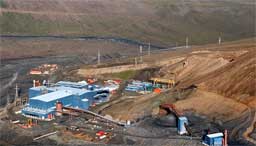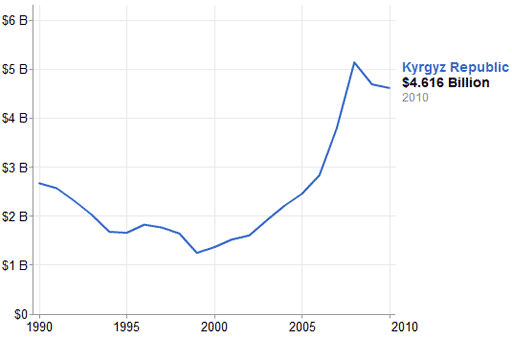BISHKEK (24.kg) – According Regional Economic Outlook for Caucasus and Central Asia report, the Kyrgyz economy is recovering.

- Kyrgyzstan is a poor, mountainous country with a dominant agricultural sector. Cotton, tobacco, wool, and meat are the main agricultural products, although only tobacco and cotton are exported in any quantity. Industrial exports include gold, mercury, uranium, natural gas, and electricity. The economy depends heavily on gold exports – mainly from output at the Kumtor gold mine (above picture). Following independence, Kyrgyzstan was progressive in carrying out market reforms, such as an improved regulatory system and land reform. Kyrgyzstan was the first Commonwealth of Independent States (CIS) country to be accepted into the World Trade Organization. Much of the government’s stock in enterprises has been sold. Kyrgyzstan’s economic performance has been hindered by low foreign investment and general regional instability. Nevertheless, Kyrgyzstan is ranked 44th on the Ease of doing Business Index.
The report says: economic growth mentioned after last year’s shocks and decay. After 9 month of 2011 GDP’s growth rate became high and overall – 8.7%. In 2010, GDP growth rate was negative -1.5 to -2%.
In the meantime, the National Statistic Committee of the Kyrgyz Republic reported that inflation in Kyrgyzstan reached 3.9% during the first 10 months of 2011. Average monthly nominal wage made up 8,638 soms throughout the republic as of October. It increased by 26.9% percent in 10 months. For comparison, salary rose by 13.1% during January-October period. The number of unemployed is 61.9 thousand persons which fell by 4.7%, while the population grew by 1.2% to reach 5.529 million.

- Kyrgyzstan GDP evolution in US $
- (Source: World Bank)

